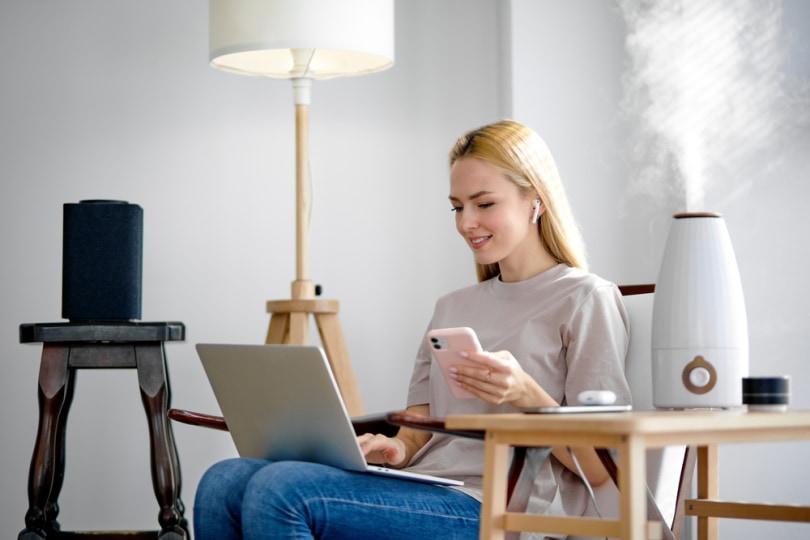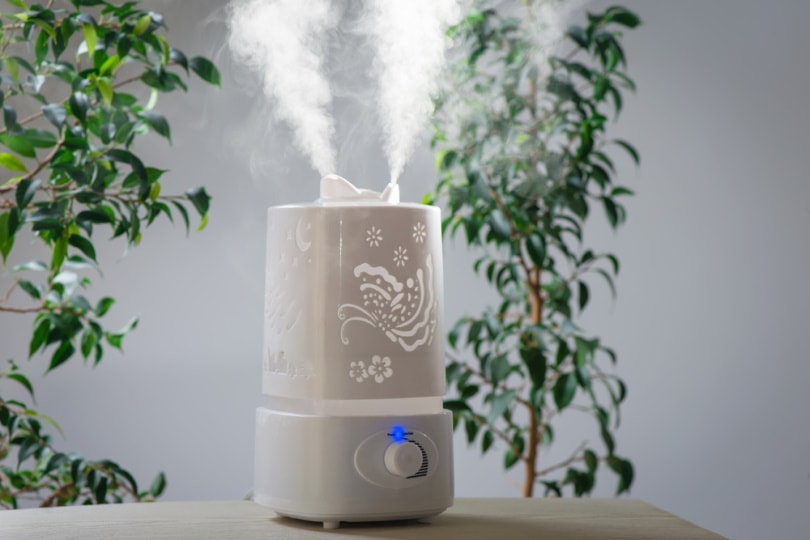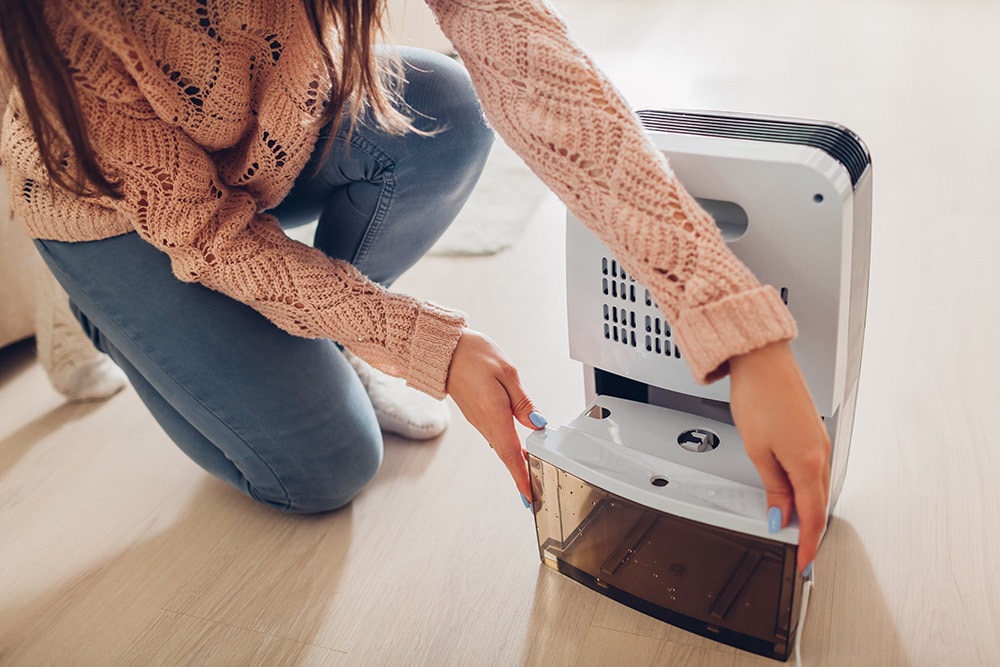How Often Should You Clean a Humidifier? Steps, Types & FAQ
-
Pete Ortiz
- Last updated:

Humidifiers make a massive difference when dry air is wreaking havoc on your sinuses. But give it time to get dirty, and your humidifier will soon become more harmful than helpful.
While you’re using it, it’s crucial to clean your humidifier at least once a week. The water tank invites germs. When your humidifier isn’t doing what it does best (creating humidity), stagnant moisture lets mold and bacteria thrive. They’re unwelcome anywhere, but the last thing you want is for these hazards to build up in something that circulates the air you breathe.
A clean humidifier provides relief without the risk of allergy or asthma-inducing microbes. In many cases, it can even help your machine last longer and perform better. We’ll explain how to ensure that your house is safe and comfortable with this look at how often you should clean your humidifier.
 How Often Should You Clean a Humidifier?
How Often Should You Clean a Humidifier?
Many humidifier manufacturers recommend that you clean their products at least once a week. The EPA advises a stricter cleaning schedule of once every three days. It’s crucial to clean the unit whenever there are noticeable deposits or scale and film buildup, and you should change the water daily.
A frequent cleaning routine will prevent microorganisms from growing and contaminating the air. Poor indoor air quality due to mold and bacteria can cause a broad range of health issues, from mild coughs to asthma attacks and flu-like symptoms. An acute lung disease called “humidifier fever” stems from contaminated air from dirty humidifiers and air conditioning units. It can eventually develop into a chronic condition called “humidifier lung.”

Types of Humidifiers
Part of your cleaning schedule may depend on what kind of humidifier you use. Central humidifiers are built-in home appliances that push humidity throughout the whole home. The more common varieties are portable. Available in prices typically ranging from $20–$200, these humidifier options come in four basic styles:
- Ultrasonic humidifiers
- Impeller humidifiers
- Evaporator
- Steam vaporizer
Ultrasonic and impeller models disperse more microbes than any other type of humidifier. You may also notice white dust on surfaces while using these units. Minerals in tap water can be released into the air and settle on furniture, floors, and shelves, creating a film.
While it generally isn’t harmful to people or animals, the dust can cause respiratory problems in some people, particularly in children and individuals with asthma. Even if it doesn’t cause any adverse reactions, it can still create a sizable mess. You can avoid white dust by using distilled water instead of tap water, which may contain hard minerals like calcium and magnesium.
Cleaning a Humidifier
Although there are several humidifier styles and even more models, the same basic cleaning concepts apply. All humidifiers store water, and any method to prevent mold and bacteria growth focuses primarily on cleaning the tank and the path the water follows.
Depending on the model, you may have one or a combination of cartridges and filters in your humidifier. Follow the manufacturer’s instructions on replacing and cleaning them, and check them frequently for buildup.

How to Clean a Humidifier in Six Steps
A weekly humidifier cleaning should only take 20–30 minutes before you set the pieces out to dry.
- Unplug and disassemble the unit
- Empty the water tank and any other reservoirs
- Soak the tank, filters, and removable non-electronic components in distilled white vinegar for 20–30 minutes to remove grime and mineral deposits
- Scrub out limescale and other buildup with a soft brush or cotton swabs for hard-to-reach spots
- Rinse all of the humidifier components thoroughly
- Set the pieces out to air dry
You may need to occasionally disinfect the unit, especially if there is visible mold growth. It’s a good habit to deep clean your water tank during your weekly cleaning, using a more powerful cleaner while the other pieces soak in a vinegar solution.
Disinfect the humidifier’s water tank with one gallon of water mixed with one teaspoon of chlorine bleach or 3% hydrogen peroxide. Fill the tank and gently agitate it to move the mixture around. Let it soak for 20 minutes.
Follow the manufacturer’s directions when using harsh chemicals like bleach, as they can break down the plastics and gaskets in your humidifier. Do not allow vinegar and bleach to mix during the cleaning process. The combination can create chlorine gas, a hazardous concoction when inhaled.
Rinse the unit thoroughly after disinfecting it and allow it to air dry. Before using the humidifier, you can run it outside for about 30 minutes to cycle through any remaining bleach.
Storing a Humidifier
It’s critical to remove any water from the unit before putting it away for the season. You’ll likely have a mold-ridden mess on your hands the next time you bring it out if there’s any leftover moisture inside. Drain, clean, and dry the unit thoroughly before storing it. Dispose of filters, cartridges, and wicks according to the manufacturer’s directions.
Dust and check the unit for damage or mold after taking it out of storage. It may need additional cleaning before you turn it on for the first time.

Can I Use Tap Water in a Humidifier?
Tap water is generally safe to use when cleaning or using a humidifier. The only potential concern is the white dust generated by some units.
Impeller or ultrasonic humidifiers tend to create white dust because they don’t have a reliable mechanism to separate the moisture from solids. While other humidifiers use steam or evaporation to emit pure water into the air, these models fling out minute water droplets. When they land, the water evaporates and leaves behind mineral deposits in the way of dust.
To account for the dust, impeller and ultrasonic units often incorporate filters into their designs. If your humidifier is consistently leaving dust even after regular cleanings, you can fix the issue by using distilled or demineralized water. Pay attention to how much you use your humidifier. It may be more cost-effective at a certain point to buy an evaporative humidifier instead of constantly spending money on distilled water.
 Conclusion
Conclusion
Whether you use a cheap portable humidifier or a whole-house central unit, regular cleaning is crucial to prevent indoor air quality issues. Humidifiers are becoming more advanced and supply excellent filtration to keep your home healthy. However, no system is fail-proof, and they all require maintenance for optimal performance. By following your manufacturer’s instructions, you’ll ensure the long-term health and safety of the entire household.
Featured Image Credit: Mariia Boiko, Shutterstock
Contents

 How Often Should You Clean a Humidifier?
How Often Should You Clean a Humidifier?